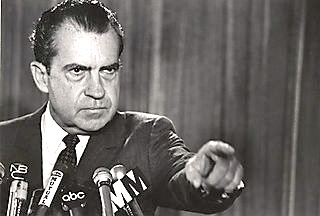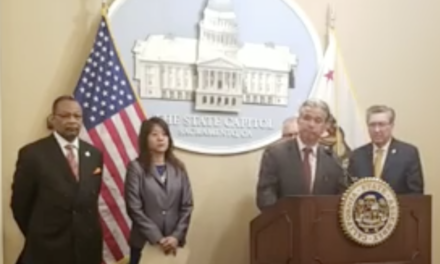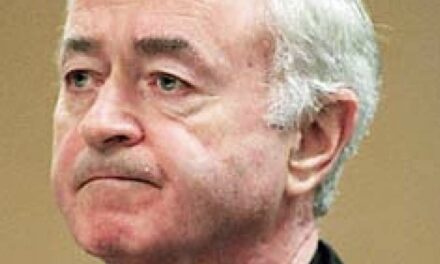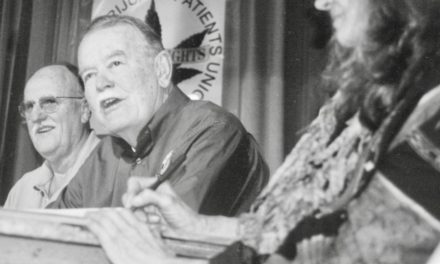National Commission on Marihuana and Drug Abuse, “Marihuana: A Signal of Misunderstanding; First Report,” Washington, D.C., U.S. Government Printing Office, 1972. Reprinted by Signet, 233 pages
By Fred Gardner
When Congress passed the Controlled Substances Act (CSA) in 1970 it created a series of “schedules,” classifying drugs by the dangers they supposedly posed. Marijuana was placed on Schedule 1, the category for harmful drugs with no medical use. Congresspersons who knew that marijuana was relatively safe and had medical potential punted the scheduling decision by creating a commission that would conduct a thorough study and “aid in determining the appropriate disposition of this question in the future.” Although the CSA left scheduling decisions up to the Attorney General rather than the Surgeon General, it was assumed —foolishly— that the findings of the new commission would result in marijuana being rescheduled.
President Nixon appointed Gov. Raymond P. Shafer of Pennsylvania, a former prosecutor with a “law-and-order” reputation, to run the commission. As recounted by activist Doug McVay, what came to be known as the Shafer Commission “recorded thousands of pages of transcripts of formal and informal hearings, solicited all points of view, including those of public officials, community leaders, professional experts and students…. they conducted separate surveys of opinion among district attorneys, judges, probation officers, clinicians, university health officials and ‘free clinic’ personnel. They commissioned more than 50 projects, ranging from a study of the effects of marijuana on man to a field survey of enforcement of the marijuana laws in six metropolitan jurisdictions.”
What Nixon Wanted
 According to oval office tapes declassified in 2002, Nixon told Shafer he wanted a report that would blur the distinction between marijuana and hard drugs. The tapes reveal that as the commission was beginning its investigation in May, 1971, Nixon told his aide H.R.
According to oval office tapes declassified in 2002, Nixon told Shafer he wanted a report that would blur the distinction between marijuana and hard drugs. The tapes reveal that as the commission was beginning its investigation in May, 1971, Nixon told his aide H.R.
Haldeman, “I want a goddamn strong statement about marijuana. Can I get that out of this sonofa-bitching, uh, domestic council? I mean one on marijuana that just tears the ass out of them.”
Two weeks later Nixon saw something in his news summary that inspired him to tell Haldeman, “Every one of the bastards that are out for legalizing marijuana is Jewish. What the Christ is the matter with the Jews, Bob, what is the matter with them? I suppose it’s because most of them are psychiatrists, you know, there’s so many, all the greatest psychiatrists are Jewish. By god, we are going to hit the marijuana thing, and I want to hit it right square in the puss. I want to find a way of putting more on that.”
“I want a goddamn strong statement about marijuana… I mean one on marijuana that just tears the ass out of them.” —Richard Nixon
On September 9, 1971, Nixon had Shafer in for a meeting and advised, “I think there’s a need to come out with a report that is totally oblivious to some obvious differences between marijuana and other drugs, other dangerous drugs… And also that you don’t go into the matter of penalties and that sort of thing, as to whether there should be uniformity in penalties, whether in courts, I’d much rather have uniformity than diversity… You’re enough of a pro to know that for you to come out with something that would run counter to what the Congress feels and what the country feels and what we’re planning to do would make your commission just look bad as hell… Keep your commission in line.”
What was the Administration “planning to do?” Haldemann had written in his diary, “[Nixon] emphasized that you have to face the fact that the whole problem is really the blacks. The key is to devise a system that recognizes this while not appearing to.” The so-called War on Drugs was the system they devised, and it has achieved its purpose all these years. Today, according to Cliff Thornton of Efficacy, felony convictions deny 13% of all Black men the right to vote.
The approach recommended by Shafer was soon dubbed “decriminalization.”
Shafer brought his report to the White House March 21, 1972. It called for a policy “which prohibits commercial distribution of the drug but does not apply criminal sanctions to private possession or use nor casual, non-profit distribution incidental to use.” This approach was soon dubbed “decriminalization.”
The Commission’s major findings, as culled by Doug McVay of Common Sense for Drug Policy:
“No significant physical, biochemical, or mental abnormalities could be attributed solely to their marihuana smoking… No valid stereotype of a marihuana user or non-user can be drawn… Young people who choose to experiment with marihuana are fundamentally the same people, socially and psychologically, as those who use alcohol and tobacco… No verification is found of a causal relationship between marihuana use and subsequent heroin use…. Most users, young and old, demonstrate an average or above-average degree of social functioning, academic achievement, and job performance…
“The weight of the evidence is that marihuana does not cause violent or aggressive behavior; if anything marihuana serves to inhibit the expression of such behavior… Marihuana is not generally viewed by participants in the criminal justice community as a major contributing influence in the commission of delinquent or criminal acts… Neither the marihuana user nor the drug itself can be said to constitute a danger to public safety… Research has not yet proven that marihuana use significantly impairs driving ability or performance…
“No reliable evidence exists indicating that marihuana causes genetic defects in man… Marihuana’s relative potential for harm to the vast majority of individual users and its actual impact on society does not justify a social policy designed to seek out and firmly punish those who use it.”
Silent on Rescheduling
Although its findings did not justify ongoing Schedule 1 status for marijuana, the Schafer Commission was silent on the subject of rescheduling. When the report came out, NORML did not protest the commission’s failure to recommend rescheduling, choosing instead to trumpet its call for decriminalization as a political win.
In 1973 the New York Academy of Medicine decided to reprint “The Marihuana Problem in the City of New York.” Shafer wrote a forward in which he acknowledged that his Commission had covered similar ground and come to similar conclusions.
“Much of the substance of the Laguardia Committee Report has been recently confirmed,” wrote Shafer. “Despite the limitations under which the LaGuardia Committee worked and the advantages under which the National Commission operated, both sets of findings are strikingly similar in the three areas that have historically created public apprehendsion about marihuana use, namely that marihuana, in itself, is physically addictive, produces insanity, and leads to crime. Both reports dispelled such allegations and myths.”
Shafer knew that his report had been tossed into the circular file by Richard Nixon, but he could not believe that strict prohibition would last much longer (now that millions of white folks were using marijuana):
“Although the Commission’s report, like the LaGuardia Committee Report, has been subject to criticism,” he wrote, “it is unlikely that its findings or recommendations will suffer the fate of the latter —to wait almost 30 years before the public is ready to accept or at least debate dispassionately the issues raised…
“Whereas the LaGuardia Committee examined a phenomenon fairly restricted in social grouping and geographical limitation, such is not the case in 1973. With almost 250,000 persons arrested yearly in this country for marihuana offenses, coming from all walks of life, the majority being under the age of 25, the preponderance never having been arrested for any other criminal activity, the mix and the problems have dramatically shifted focus. The social nervous system is feeling the pressure, and the collective brain and conscience are demanding relief.”
That’s where things stood in 1973.
Related story: Nixon: “A Person Drinks to Have Fun!” From the Oval Office Tapes May 26, 1971





